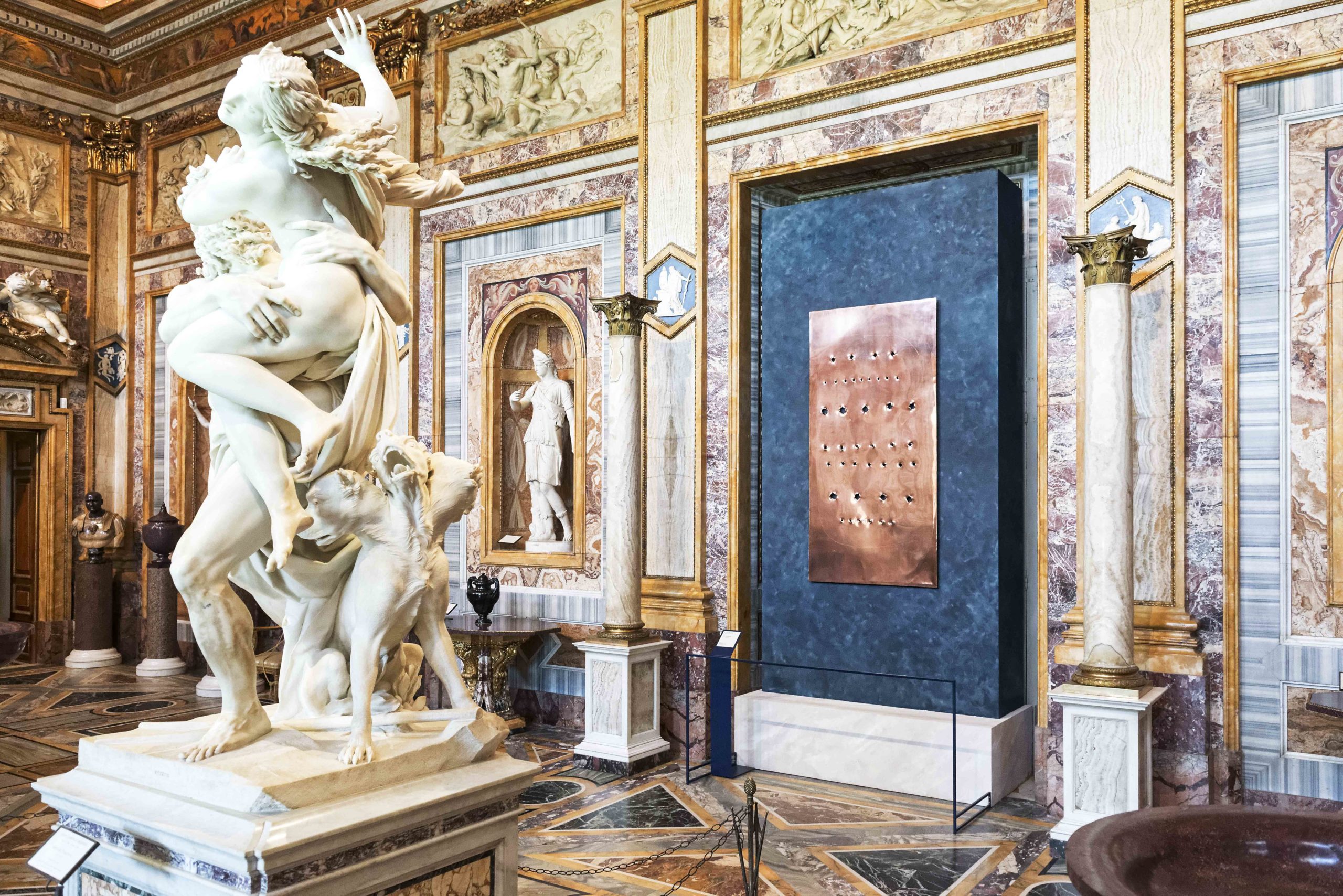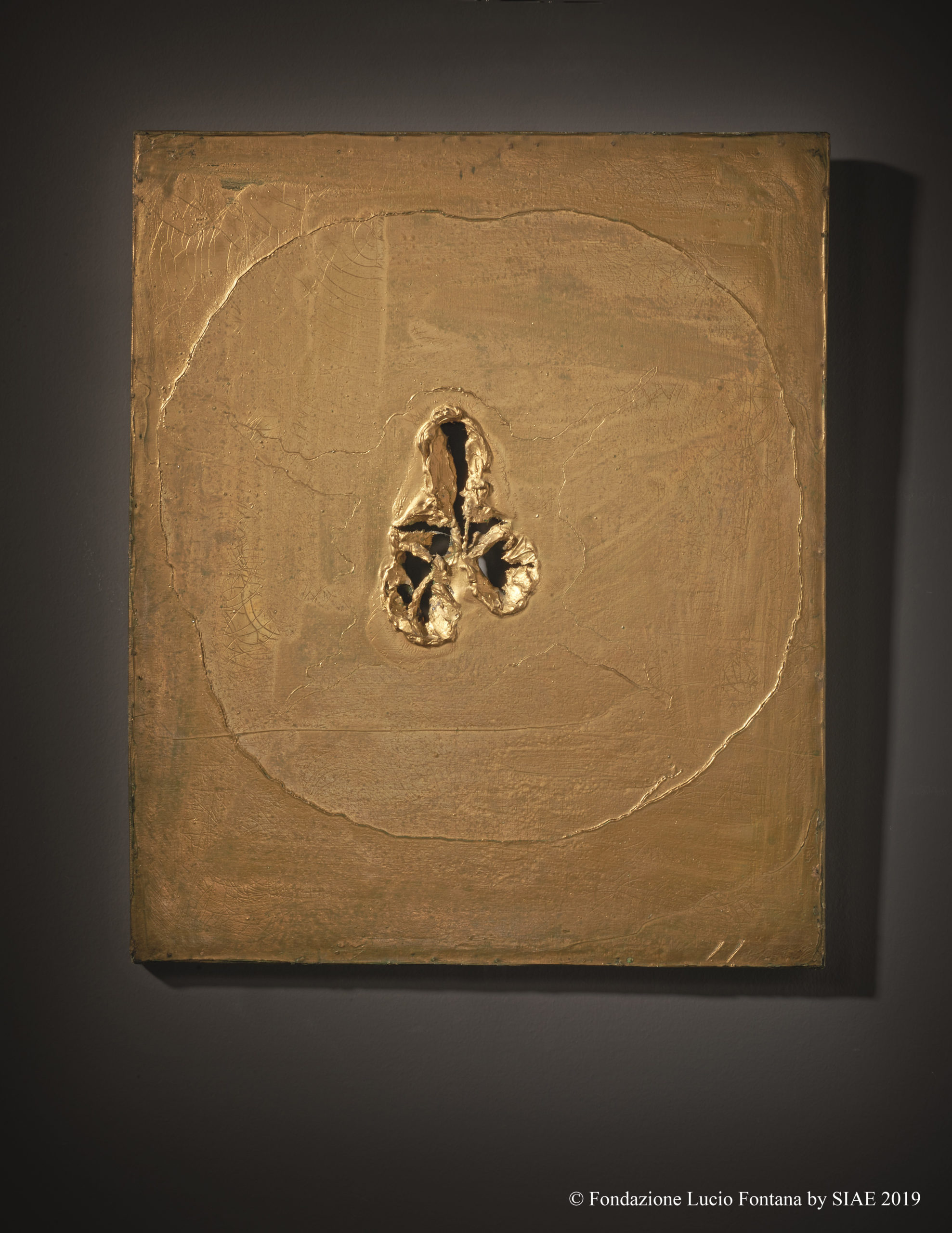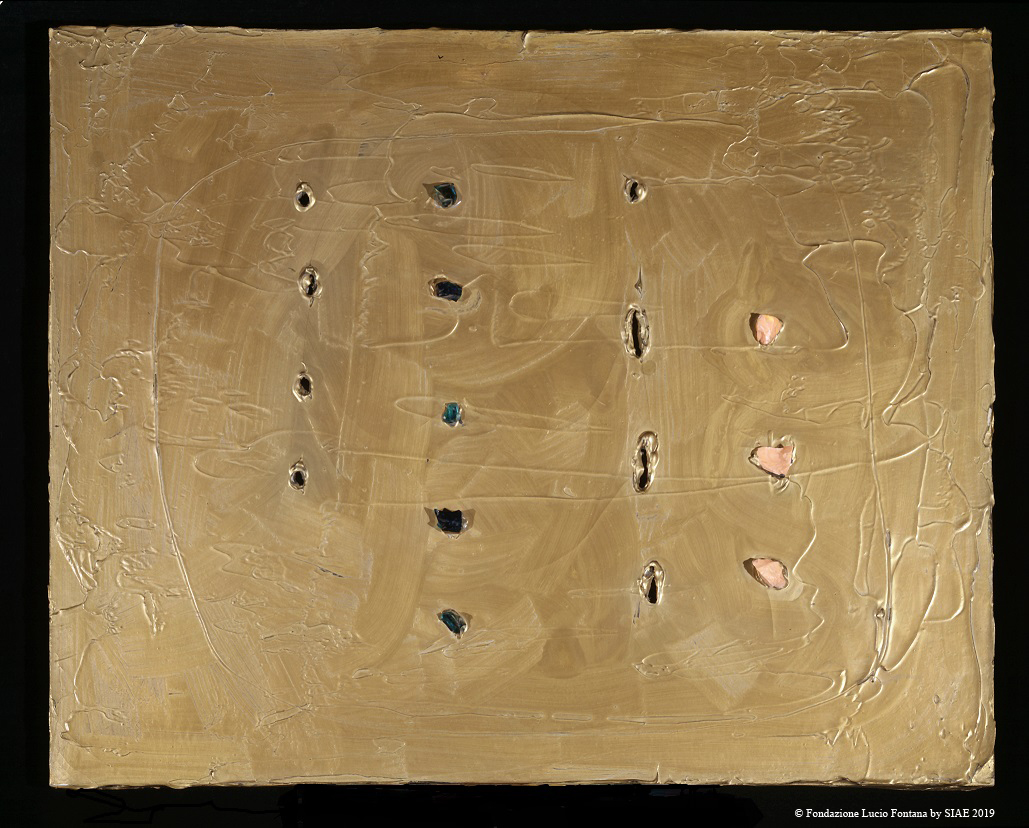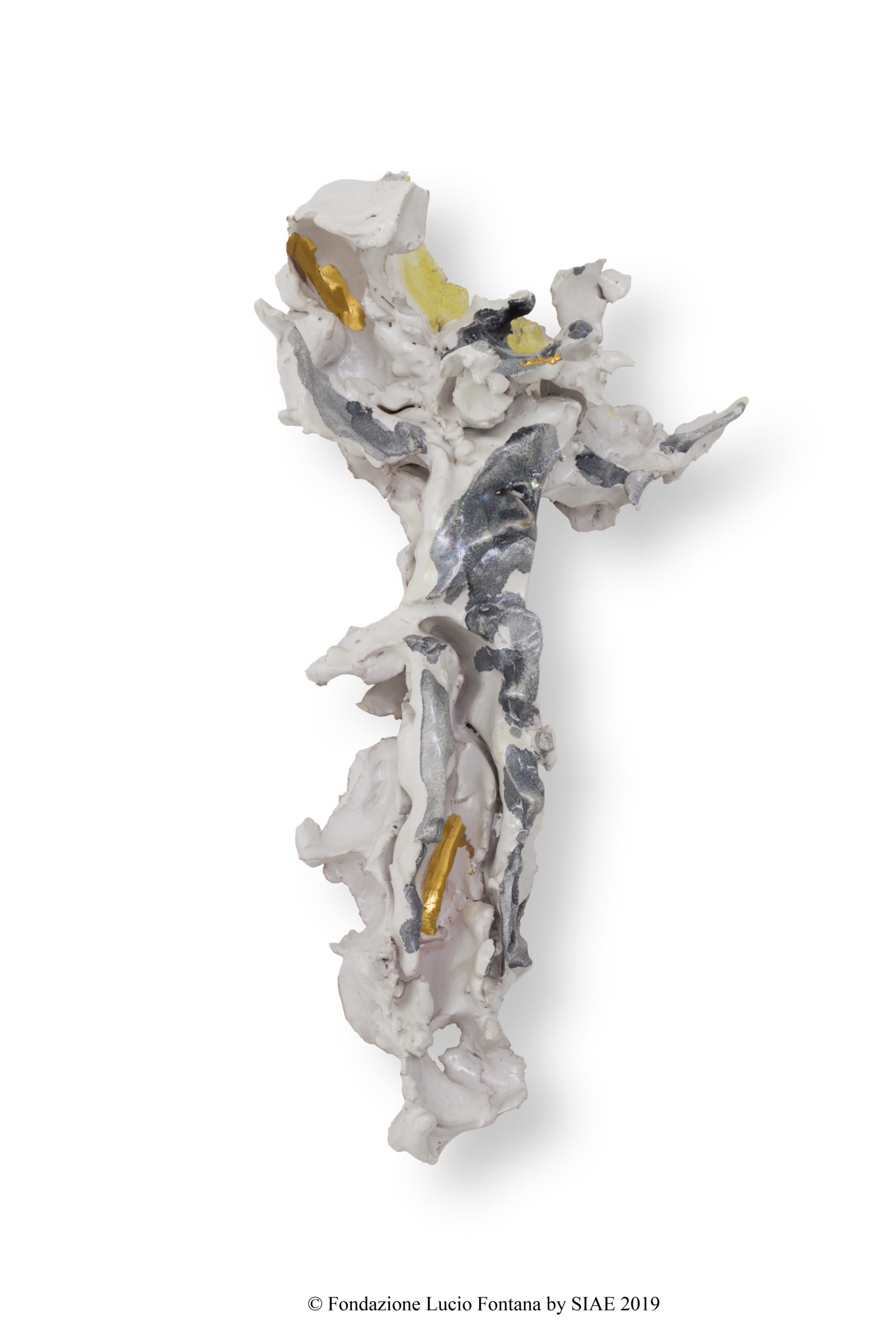LUCIO FONTANA: EARTH AND GOLD

The Galleria Borghese will dedicate an exhibition to a specific production by Lucio Fontana: his gold Spatial Concepts and ceramic Crucifixes. Fontana will be the first 20th-century Italian artist displayed in the Museum after the retrospectives dedicated to great international figures such as Bacon, Giacometti, and Picasso.
About fifty woks – gold oil paintings and ceramics, executed mainly in the 1950s and 60s – will be presented. The exhibition is part of a research programme that the Museum has been conducting for years on its exceptionality as a highly significant place with a combined identity as both a collection and the space surrounding it. .
The insertion of Fontana’s works within the collection – in particular, among the paintings of the Renaissance an the Baroque – will help to highlight the constant topicality of a problem that is crucial in the pursuit of painting of every era: the concept of “space”, its definition, and the anxious search for its representation.
To make Lucio Fontana’s creative apex meaningful, the focus will be on the great artist’s gold production – gold not as a colour, but as a supreme, anti-naturalistic abstraction in a context, the Galleria Borghese, where the infinite chromatic variety and the multiplicity of themes and subjects pervade all the space. Thus gold no longer in the Baroque sense of the supreme glorification of ornamentation, but rather the structural summit of form whose visual and compositional material encloses light itself in its physical and aesthetic interpretation. Gold as a spatial component that – as in the older eras of classical Antiquity, early Christianity the Middle Ages, and the Renaissance – is the synthesis of light and space.
But at the same time, also gold as a virgin material originally mixed with mud. Thus his magnificent production of ceramics, created in material terms from muddy earth, will accompany his gold works in this exhibition, with the latter being juxtaposed to a group of “terra-cottas”, his painted ceramics, with Crucifixions as the dominant subject: compositions that are all deeply shaken by an unseemly shiver out of the Baroque.










